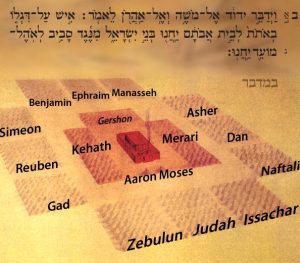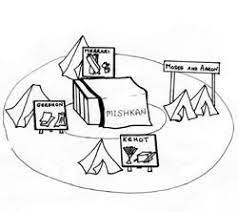This week Kaszovitz meets Lefkowitz. We begin with a big mazel-tov shout out to our friends of several decades, Naomi and David Kaszovitz, upon the upcoming aufruf -this shabbis- and wedding – this coming week- of their son amazing Josh, who will be marrying Lara Lefkowitz, she the beautiful daughter of Miriam &Steven Lefkowitz. A big mazel tov shout out grandma Beverly Skolnick. Mazel tov as well to Josh’s brothers and sisters and to the entire extended Kaszovitz family. May Lara and Josh to zoche to enjoy together, many decades of blissful marriage.
Another mazel-tov shot-out to chaver Avi Gluck, of the Monroe Avenue minyan upon the upcoming wedding (this coming week) of his son Yoni. Yoni will be marrying Sara Halpern, she the beautiful daughter of Shmuel and Baila Halpern, and granddaughter of Rabbi Avrohom and Ahuva Halpern, they, friends of many decades. Mazel tov to Yoni, his siblings and to the extended mishpocho. May Sara and Yoni merit to enjoy many decades of blissful marriage.
———————————————————————————————————————
Security Detail: Then and Now!
Let’s start with this. Of late, kimat every shul here in the United States, no matter its size, has a security detail. Over in Europe and other parts of the world, shul security has been a given for decades, ober here in the states, it’s still -on a consistent basis- rather newish. The larger shuls rely on outside security people, most often moonlighting police officers, and others in suits who look the part. Smaller shuls and shtiblech more typically -but zicher not always- rely on volunteers from among the membership. The bottom line: kimat every shul has at least one member who packs heat and enjoys the trust and responsibility of walking around with a gun and or walkie talkie on shabbis and Yom Tov. And taka, in our times, we need all hands on deck. Yashar koiach!

Ober is this a new phenomenon? Did our temples, our holy places, always require security detail? Is security mentioned in the heylige Toirah? Was it efsher mamish required? Efsher even commanded? Who if anyone, protected the holy Mishkan while the Yiddin were moving about in the midbar? Was security mamish required back then? And was it a sin not to have proper security? Did those in charge of security pack heat? Who were they? Were they buff? Were they undercover? What specifically were they guarding? We shall address and answer these questions -most of them below, ober ershtens…
Welcome to Parshas Koirach which is most well-known for the big confrontation between this fellow named Koirach and our man Moishe. They were cousins, and in a tradition efsher begun by Koirach, many cousins -ad hayoim hazeh- don’t get along. Shoin! Koirach was a very wealthy man and avada those with enormous wealth typically -but not always- also want power. Some do it quietly, ober Koirach went public with his agenda and shoin, all hell broke loose. In fact, as the story came to an end, hell came down to earth where an earthquake, or sinkhole of some sort, miraculously -after Moishe asked the RBSO to perform one- opened its mouth and shoin, just like that the rebellion was squashed and over. The entire rebellion was now permanently underground, no more Koirach.

What was Koirach’s beef with Moishe? Moishe had power and honor, Koirach, though exceedingly wealthy, seemingly had none. Many dozens of exegeses have been written about this most improbable story and its protagonists, let’s review one shtikel shocking Gemora which tells us azoy: One of Koirach’s complaints against his now less than favorite cousin Moishe, was that he (Moishe) was guilty of stealing his (Koirach’s) wife. Come again? Was Moishe double dipping? Could this be emes? This wasn’t an allegation against stam azoy a person; Koirach pointed a proverbial finger at Moishe and accused him of chapping, if you chap, from his wife. Yikes! And while we taka learned a few weeks back that Moishe separated from his own wife Tzipoira, and logic would dictate that he’d be a shtikel lonely, nowhere did we learn, or even kler that Moishe was efsher involved with another woman. Oy vey. Could such a rumor be emes? Say it’s not so please. Banish the thought! Just the thought of it is repugnant, ober who is the Ois to argue with the heylige Gemora when they put forth such a potential conspiracy theory? And who are you to criticize the Ois for bringing down this Gemora? Ober what’s taka pshat, why go there? Why put such chazerish machshovois (thoughts), ludicrous as they sound, into our minds?
Nu, let’s try to chap what took place and why Koirach accused Moishe of chapping what was his. For those who have a fascination with gilgulim (reincarnation), buckle down, this one is mamish a vilde myseh (wild story). Says the Arizal, he the great kabbalist whose mikveh had no hot water, azoy: Moishe was a gilgul of Hevel, remember him? Hevel made a brief appearance in Parshas Bereishis and was immediately disposed of by his jealous brother who felt the world wasn’t big enough for the two of them. He’s back- only this time as none other than Moishe Rabaynu, leader of the Yiddin. Veyter. Next, we are taught that Koirach was a gilgul of Kayin, he the disgraced murderer of Hevel. Nu, halt kup (pay attention) and for those who were daydreaming about mydlich (girls) or throwing spitballs across the room and not paying attention while in Yeshiva, here’s what happened back then. Both brothers brought korbonois (sacrifices) to the RBSO. The RBSO accepted Hevel’s and rejected Kayin’s. Shoin! Kayin became jealously enraged and killed his sibling in cold blood. Only one eye witness; the RBSO. Nice!
The story continues: In order to procreate the world, both Kayin and Hevel were born with twin sisters, one for each of them. Is the RBSO great or what? Eventually but exactly when we are not told, the two sisters passed on and went back up to Shomayim (heaven) for some well-deserved rest. Procreating the gantze velt can be tiring. Many years later they came back to earth punkt (exactly) when Yisroy and Paroy the minuvil were walking in the fields of Mitzrayim. And since this happened before organizations like Ohel were up and running, these two kind hearted individuals (Paroy and Yisroy), upon encountering these two girls nebech valgering (loitering) in the fields, took them in as foster children, liked them and adopted them. Nu, avada you and I couldn’t make up such a story, ober the people who wrote the heylige Gemora and the kabolah were mamish very creative and taka did write this mayseh (story). What happened next? Paroy named his tuchter (daughter) Basyah (some say Bisya) and Yisroy named his tuchter Tzipoira. This Tzipoira, as the story goes, was the original wife of Hevel and also his twin sister, and now many generations later, became the wife of Moishe. She’s back!
And how is the gantze myseh which requires a flowchart, and can give one a gizunta headache, relevant to Koirach being angry with his cousin Moishe? Pay attention: Koirach claimed that since he, as Kayin in an earlier life, killed Hevel, he should have to marry his brother’s wife through Yibum (Levirate marriage meaning based on the heylige Toirah azoy: … her brother-in-law shall take her as a wife… ( Deuteronomy 25:5) If a man dies without children, there is a mitzvah for his brother to marry the widow. This mitzvah is called yibum in Hebrew or levirate marriage in English). Therefore, he claimed that Tzipoira was really rightfully meant to be his wife. And why not? Don’t we always encourage murderers to marry their victims’ wives? Veyter! And now you know why he was all upset with Moishe: Seemingly according to this very creative pshat, Moishe taka took his wife and according to the medrish, this explains the language in Possik #1 of the Parsha where it says azoy:
| Koirach the son of Yitzhar, the son of Kehos, the son of Levi took [himself to one side] along with Doson and Aviram, the sons of Eliaho and Oin the son of Peles descendants of Reuven. | א. וַיִּקַּח קֹרַח בֶּן יִצְהָר בֶּן קְהָת בֶּן לֵוִי וְדָתָן וַאֲבִירָם בְּנֵי אֱלִיאָב וְאוֹן בֶּן פֶּלֶת בְּנֵי רְאוּבֵן |
Seemingly what this means is that Koirach took exception to the fact that Moishe, besides laying down the laws of the RBSO, was also epes laying down with his wife, if you chap.
Now listen to how clever our Rabbis of yore were, how they so brilliantly weaved the story together so that it mamish sounds plausible mamish, like it really happened. All we have to do is believe it. Did it? Ver veyst, but it’s avada possible, especially if the heylige Gemora and or kaboloh says so. Nu forget the parsha; it’s abundantly clear that many of you are mamish out of your keylim (minds) with desire, if you chap, to know more.
So where did Koirach go wrong with his accusations against Moishe, and why did he think that after murdering Hevel while he was Kayin in a previous life, that he was entitled to have his brother’s wife. Is murder rewarded? Does one get to enjoy the wife of the brother he just killed? Is this justice? Shoin, in today’s woke society, efsher this too is permitted?! Let’s recall that Tzipoirah was a Kushite, need we say more? Seemingly in Koirach’s twisted mind, though terribly misguided, efsher it was. After all, he did have money! Moreover, even those who chap the very complicated Yibum laws, would they apply generations earlier, or later? Oy vey! Ober Raboyseyee, we must avada remember that the RBSO thankfully gives most of us second and third chances. Without those, many of you oisvorfs wouldn’t make it past Yoim Kippur for chapping all year what you shouldn’t have. Kayin was no exception, neither Koirach.
Kayin’s jealousy stemmed from korbonis to the RBSO. Koirach was envious of Moishe and Aharoin because Aharoin was appointed the post of big Kihuna and was now in a position to bring the sacrificial offerings. Accordingly, the incidents are related. And to top it all off, it so happened that Koirach and his merry men were standing on the same ground mamish as did Kayin (also him) way back in the beginning of time. And how do we know this to be emes? Says the Mishna in Ovois: ten things that were created during twilight on erev shabbis. Among them was the mouth of the earth. When the RBSO punished Kayin for his sin he said: “cursed are you from the earth that opened its mouth to receive the blood of your brother” (Bereishis 4:11). Similarly in our Parsha when Koirach is swallowed up, the same terminology is used: “The earth opened its mouth and swallowed them, their houses, and all of their property” (Bamidbar 16:32). Koirach failed in his chance to rectify his wrongdoing, and was punished mida kineged mida (measure for measure). Well blow me down!
Nu, believe it or not, that myseh -sexy and thrilling as it is- and gishmak to read, is not the topic of the week. Instead, let’s attempt to answer a few questions posed in the opening paragraphs by skipping ahead to near the very end of the parsha. That’s where the RBSO gives Moishe special instructions and job descriptions to the Kohanim and Levi’im. As it turns out, there is more to Parshas Koirach than a great and interesting story about a power struggle, and the latter half of parsha deals with various aspects of the kehuna (priesthood), specifically, the laws concerning the responsibilities of the Kohanim and Levi’im. As an aside, Koirach himself was a Levite. Let us read a few pisukim that you likely never paid much attention to. Says the heylige Toirah (Bamidbar 18:5) azoy:
| They shall keep the charge of the Sanctuary and the charge of the altar, so that there be no more wrath against the children of Israel. | הוּשְׁמַרְתֶּ֗ם אֵ֚ת מִשְׁמֶ֣רֶת הַקֹּ֔דֶשׁ וְאֵ֖ת מִשְׁמֶ֣רֶת הַמִּזְבֵּ֑חַ וְלֹא־יִֽהְיֶ֥ה ע֛וֹד קֶ֖צֶף עַל־בְּנֵ֥י יִשְׂרָאֵֽל: |
In plain English? The kohanim and Livi’im had real jobs; they were in charge of security. “Ve-shomeru et mishmeres Ohel Mo’ed” (They shall observe the guard of the Tent of Meeting.) Ober, the shaylo is azoy: what were the Yiddin worried about? Why the need to guard the Mishkan? Was anyone coming to mess with the RBSO’s house? Were they worried about a break-in? Vandals? Arson? Who was going to cause harm to the Mishkan? And yet it required security? What’s pshat? Shoin, lest you conclude that the heylige Ois is mamish asking iluyishe (genius) questions, so happens that a book he came across written by Rabbi David Bigman (“The Fire and the Cloud: Contemporary Reflections on the Weekly Torah Reading”), but only after the Ois asked these very questions, asks azoy” “Is G-d in need of a vigil? Does He need to be guarded?”
Says the Rambam (Sefer Ha-mitzvos -asei 22), on our parsha, azoy: this posik referenced above) is the Biblical sources for the obligation of shemiras ha-mikdash – guarding the Temple. The kohanim and Leviyim were required to stand guard at certain locations around the area of the Temple as an expression of honor to the sacred site. Mamish? Moreover, the obligation to guard the Mishkan in the desert extended to the permanent temple built in Yirusholayim where each night 24 teams of Kohanim would act as shomrim, guarding and keeping watch over the temple. These priests would stay awake throughout their watch. When their watch ended, they would remove their priestly garments, don their “street clothes” and sleep humbly on the ground. “This was like all guardians of a king’s palace who never take the luxury of sleeping on beds.” As an aside, the Ramban and other disagree and argue that guarding duties as described in our parsha, were only in effect while the Mishkan was being moved about the midbar.
And says the Sefer Ha-Chinuch azoy: the Kohanim and Livi’im were commanded to guard the Temple and to patrol its perimeter constantly, every night, all night. This guarding is in order to glorify it and to elevate it and to increase its honor, and not, G-d forbid, because we fear an enemy onslaught. This is based upon the posik in our parsha: “they shall guard the watch of the Tent of Meeting” (Bamidbar 18:4). Says the Mechilta (Sifrei Zuta) azoy: glorious is the Temple that has watchmen guarding it. A palace with guards is not to be compared to a palace without guards.
 How did all this work? Where were the Livi’im situated? Shoin, let’s go back a few weeks where in Parshas Bamidbar, the preparations for journeying towards the promised land begin in earnest. On the first day of the second month of the second year, scarcely a month after the completion of the Mishkan, a census of the people was taken by their tribal leaders under the direction of Moishe. Next, the twelve tribes were organized into four groupings, each if which was to occupy a different quadrant around the Mishkan that was to be located at the center. The Livi’im were divided into three families (clans), each one of which was to be stationed directly around one of the four sides of the Mishkan, thus forming a buffer between the holy precincts and the camp of Israel. The Levitical clans were henceforth charged not only with their specific duties that relate to the conveyance of the Mishkan elements but also with the task of serving as the loyal guardians of the sacred spaces, ensuring that unauthorized Israelites do not trespass. In plain English: as the Yiddin traveled, the Levi’im surrounded the Mishkan on three sides. As for the missing fourth side along the honored eastern axis that marks the entry portal of the Mishkan, it is to be settled by none other than Moishe and Aharoin and their respective families.
How did all this work? Where were the Livi’im situated? Shoin, let’s go back a few weeks where in Parshas Bamidbar, the preparations for journeying towards the promised land begin in earnest. On the first day of the second month of the second year, scarcely a month after the completion of the Mishkan, a census of the people was taken by their tribal leaders under the direction of Moishe. Next, the twelve tribes were organized into four groupings, each if which was to occupy a different quadrant around the Mishkan that was to be located at the center. The Livi’im were divided into three families (clans), each one of which was to be stationed directly around one of the four sides of the Mishkan, thus forming a buffer between the holy precincts and the camp of Israel. The Levitical clans were henceforth charged not only with their specific duties that relate to the conveyance of the Mishkan elements but also with the task of serving as the loyal guardians of the sacred spaces, ensuring that unauthorized Israelites do not trespass. In plain English: as the Yiddin traveled, the Levi’im surrounded the Mishkan on three sides. As for the missing fourth side along the honored eastern axis that marks the entry portal of the Mishkan, it is to be settled by none other than Moishe and Aharoin and their respective families.

These shomrim (guards) had a dual purpose. They gave honor to the RBSO, and when people saw how the Mishkan or temple was cherished, says one commentator, “their hearts would be softened” to return to the values which that place represented.
And we close with a shtikel humorous Mishnah (Middos 1:1-2) which relates a humorous description of the Levi’im guarding the Temple in Yirusholayim:
In three places the priests guarded the Temple … and the Levites in twenty-one places … A “man of the Temple Mount” was appointed to make the rounds of the watches of the entire night, with burning torches before him. If any sentry failed to stand up and say, “Man of the Temple Mount, peace be upon you,” it was evident that he (the guard) was sleeping, and the man of the Temple Mount would hit him with his staff, and he had permission to set fire to his cloak, until it would be said, “What is that sound in the Temple court?” “It is the sound of a Levite being beaten and his clothing set on fire because he slept at his watch.”

The bottom lines: security to protect holy places dates back thousands of years. Back then it fell upon the Kohanim and Levi’im; it was their mission. Some of us need to be guarded from ourselves. Everyone has, or should have a tafkid (mission) in life. Figuring out what that mission may be, might take many years of trial and error. The good news: As long as we’re alive and not falling asleep on the job, moist of us eventually figure it out.

A gittin Shabbis koidesh and a gittin Choidesh!
The Heylige Oisvorfer Ruv
Yitz Grossman
